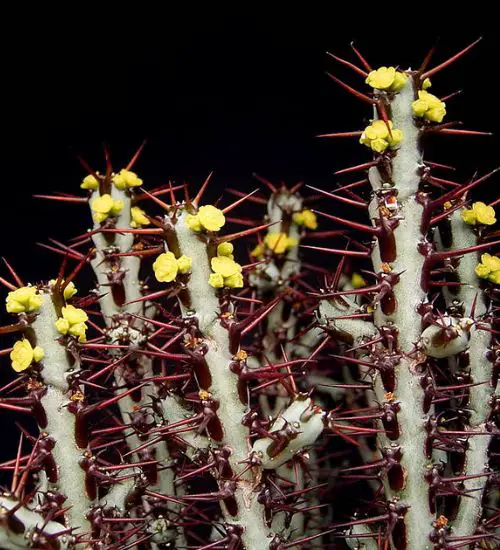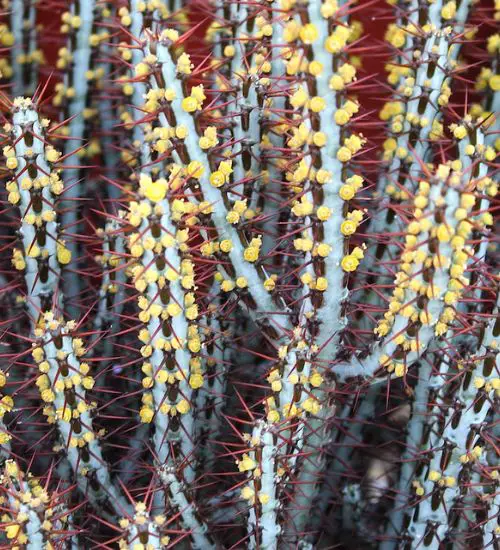Sun: full sun
Water: More water than a typical succulent
Temperature: Zone 10a from 30° F to 35° F (-1.1 ° C to 1.7° C) to Zone 11b from 45° F to 50° F (7.2° C to 10° C)
Winter Survival: Not cold hardy
Propagation: cuttings, seeds
Flower: late winter into early summer
Flower Type: Yellow
Toxic: Toxic to humans and animals
Dormant: winter
Space Requirement: Outdoors
Common Problems: No major pests, Plants may rot if overwatered
Where to buy Euphorbia Aeruginosa?
Basc Care for Euphorbia Aeruginosa
Watering
You can water your succulent more than often in extreme conditions but make sure that the soil is completely dry before watering your succulent again.
One simple tip for you is that you can use some online apps to check the soil status before you go water your succulents. I would recommend the ThePlantsCheck app, it has some nice features there.
Fertilizing
Only feed this succulent during its active growing seasons which means winter. Use the right fertilizer applied in the right amounts. Applying half-strength balanced fertilizer every month or so is recommended for optimal results.
Do not fertilize during winter as the plant is dormant.
Sun & Location Requirements for "Euphorbia Aeruginosa"
Euphorbia Aeruginosa requires full sun in order to thrive. When choosing a spot for your succulent, make sure it gets at least 6 hours of direct sunlight per day. If the leaves start to look pale or weak, this could be an indication that the succulent isn't getting enough light.
As per this succulent profile, it is only able to stay healthy when the environment temperature is above the range of zone 10a from 30° F to 35° F (-1.1 ° C to 1.7° C).
In order to ensure that Euphorbia Aeruginosa survives the winter, insulation and drainage are essential. A layer of mulch or gravel around the plant can help keep the roots warm during cold temperatures. Furthermore, avoiding exposure to wind and sun can reduce the risk of frost damage and promote longevity for your succulent.
Any succulents in the group will need a large space to grow. You should place your pot outdoor. Since this plant needs a lot of space than other succulents, you should consider not planting them together with other succulents/plants.
Propagation
One way to propagate Euphorbia Aeruginosa is by cutting
Euphorbia Aeruginosa propagates easily from seeds, however it's important to look for healthy ones which are plump, dark in color and slightly sticky when touched. To start the propagation process, mix a soil mixture with well-draining potting mix then sow the seeds evenly and press them lightly into the surface. Finally, water the soil using a spray bottle and place it in bright but indirect light to ensure germination.
Toxicity

Euphorbia Aeruginosa is a highly toxic succulent that should be treated with extreme caution to avoid serious health risks. If ingested, it can lead to severe gastrointestinal distress, respiratory problems and even death. It is best to keep this plant away from homes or gardens where humans or animals reside.
Pests and Diseases
Euphorbia Aeruginosa is not affected too much by common pests and diseases like most of the other succulents.


